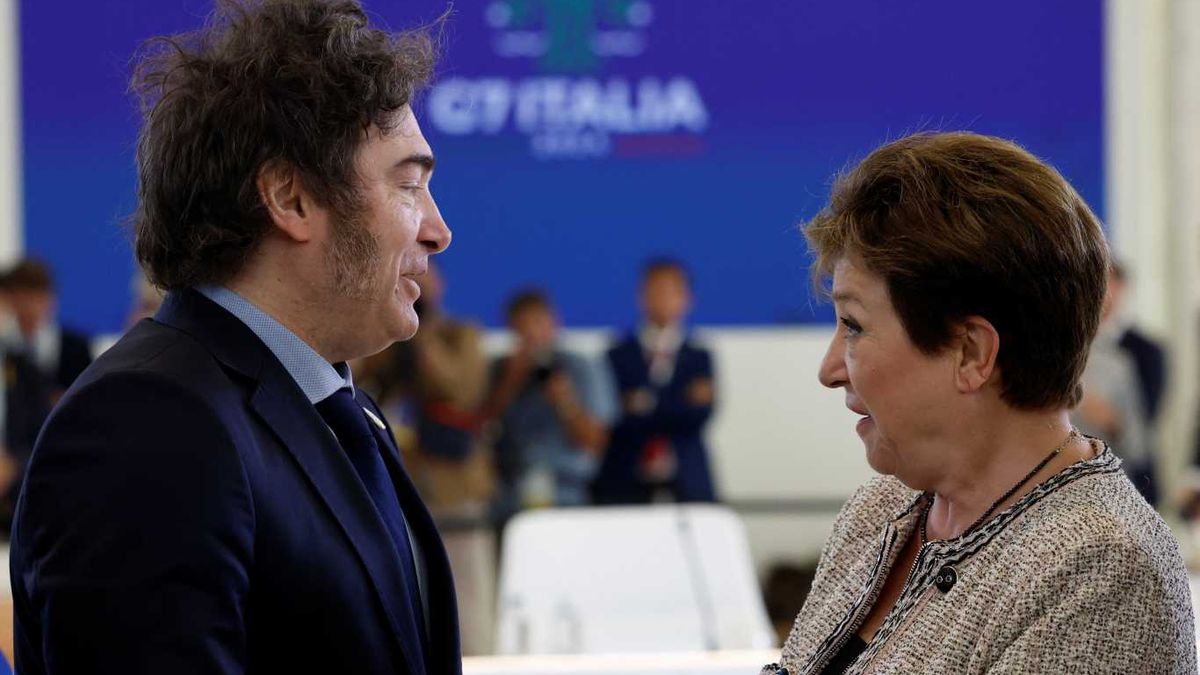Without IMF there is no paradise. Since last Thursday, The Argentine economic team headed by Minister Luis Caputo has extended its stay in Washington in a display of diplomatic tenacity – the expression is excessive – that could extend several additional days, in line with the president’s imminent visit scheduled for October 14.
This immersion in the capital where the rotary presses that feed the entire planet with dollars remain It is not a mere procedure, but a response to the complexity of the negotiations that intertwine the United States Treasury with the International Monetary Fund. The fact to keep in mind is that, with the evolution of the days, it is clear that The green light of a new program emerges as the essential requirement to activate the rescue.
The core of these deliberations – under unprecedented secrecy and with the figure of Kristalina Georgieva and her staff pivoting throughout Washington – lies in a comprehensive assistance package, designed to inject oxygen into an economy besieged by scarce reserves and exchange pressures.
Kristalina Georgieva Scott Bessent Luis Caputo
Talks accelerate in Washington
First of all, it outlines a renewed swap for US$20,000 million between the Federal Reserve and the Central Bank of the Argentine Republican instrument that would provide immediate liquidity in foreign currencies to stabilize the exchange market and mitigate capital flight in a context of inflation that is still around double digits per month. This swap, however, does not operate in a vacuum: Its financing would be anchored in Special Drawing Rights (SDRs) provided by the United States through the IMF.a mechanism that relieves pressure on the North American federal budget while imposing multilateral scrutiny. For this mechanism to be activated, the endorsement of the organization’s board is required.
The SDRs, with their value equivalent to a basket of strong currencies, would represent not only a temporary bridge, but a catalyst to reposition the BCRA’s net reserves above critical thresholds, thus avoiding forced interventions in the official market.
Intervening in the bond market, a key to lowering country risk
Complementing this line of liquidity, Washington’s commitment includes direct intervention in the Argentine sovereign bond market –something that Ámbito had anticipated last week-, possibly through selective acquisitions by the Treasury or in coordination with institutional investors. The curious thing is that to trigger this measure in Washington they think that only the commitment to do so should be enough, a reversal of the “whatever it takes” that the secretary already put into play. Scott Bessent. It is difficult – they muse – for investors to harbor distrust in the payment of the Argentine debt if whoever is behind that commitment claims to have – and it would make you think the same thing – infinite dollars at their disposal.
This measure would seek to compress credit spreads, which have widened due to electoral uncertainty, and encourage external demand that alleviates the government’s financing burden in a maturity horizon that exceeds US$30 billion until the end of President Milei’s term.
Nevertheless, The viability of this framework depends on a new agreement with the IMFwhich the Argentine government must negotiate from now on to clear the way for Treasury support.
The demands of the IMF and those of the Treasury
Under the direction of Kristalina Georgievathe Fund would not be limited to being a mere operational channel, but would would require a rethinking of the extended facilitieswith emphasis on goals quantifiable measures that guarantee debt sustainability and macroeconomic consolidation. The conditionalities of this renewed program would cover, among other pillars, the achievement of consistent primary surpluses, the rationalization of public spending on subsidies and transfers, and structural reforms aimed at the tax level, trade openness and labor deregulation.
To this must be added the commitment of increase the number of reservations in the BCRA, a specific request that the Government decided to ignore the IMF program that Argentina still has in force with the organization today and that deserved a waiver from the Fund.
Such demands, although rigorous, respond to the need to restore Argentina’s credibility as a serial debtor to the IMF, whose outstanding balance is the largest in the organization’s history. The IMF Executive Board, the supreme arbiter of these decisions, incorporates an element of asymmetric power where the United States quota—16.5%—confers a de facto veto, aligning bilateral interests with multilateral discipline.
Without the consensus of this board, the swap and debt purchases would be suspended in bureaucratic limbo, exposing the country to a rebound in volatility that could erode progress in the adjustment agenda promoted by the Milei Executive. The presidential visit on October 14 injects a high-voltage political nuance into this time sequence. Beyond the summits with the Secretary of the Treasury, the dialogue with Georgieva and her team will take center stage, not only to refine technical details, but to project a narrative of reformist commitment to rating agencies and global funds, in a year where legislative elections define the balance of power in Congress. Strictly speaking, it will be the task of the Legislative Palace to discussion of the new agreement.
This external support, if materialized, could be the necessary balm to sustain the stabilization plan, allowing the Government to navigate the pre-electoral turbulence without resorting to uncontrolled squandering of reserves by the BCRA or more severe capital controls.
Source: Ambito




